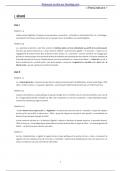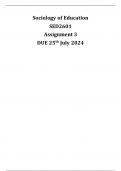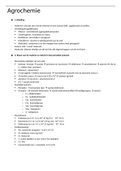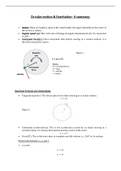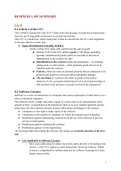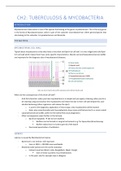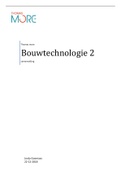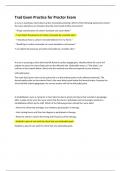Gender and the Law
– office 40.128
Approach and Contents
- Global approach issues from a very wide geographical perspective and then
analyse for Catalonia or for Spain
- Main focus is on Western Legal Tradition
- History of early modern era (16th-18th centuries) women from civil (mainly family
and succession), criminal and labour law perspectives (even though legal categories
are nowadays very different from what they used to be!)
From feminist vindications to gender studies – 18th-21st Centuries
- 18th century Enlightenment: Human (and secondarily Women’s) Rights moving
forward at theoretical and philosophical levels
- Late 18th century Olympe de Gouges’ and Mary Wollstonecraft’s claims to modify
laws which implied women’s’ inequality and submission to their husbands
- French (with Peruvian origins) feminist Flora Tristan (1803-1844): illegitimate
daughter + separated woman; “Pérégrinations d’une femme” (1833); “L’Union
Ouvrière” (1843)
- Karl Marx; Friederich Engels, The Origin of the Family, Private Property and the State
(1884)
- Suffragettes (late 19th – early 20th centuries)
- Virginia Woolf, Three Guineas (1938), simultaneously challenged several institutions
(judiciary, military, finance, Church...)
- Simone de Beauvoir, The Second Sex (1949) –Le deuxième sexe–: “On ne naît pas
femme, on le devient”
- From non prohibiting (a big deal!) to positive action. What feminism? Demands for
access to privileged forms of power or a way to rethink the very existence of those
sites of power???
- Widening doors: from the 1970s, Queer studies, gender perspective involving most
Human and major sciences, slow “normalisation” of transexualism...
Methodology and Sources
- Historical sources are limited and often non preserved. Within existing ones, women
are almost always silent or silenced.
- Fully comprehensive historical comparison men/women: an unattainable goal
- Kim M. Phillips, “Voices”, chapter 5 of Medieval Maidens: Young Women and Gender
in England, 1270-1540, Manchester U. P. 2003
o Active docility
o Titles and main characters of his short stories (“caricatures”): “Send more
clothes”; “Marry me”; “Ave Maria”; “restive voices” (don’t call me lass!)
o Women act as (indirect) witnesses far more than as authors
o letters (scribal intervention) -> rare for women to write, were men writing on
behalf of women? Were they writing what the woman dictated or their own
interpretation?
, o churchwarden registries
o records of King’s Bench court (summarised records) / ecclesiastical courts
(some transcriptions of deponents’ statements)
Legal Pluralism in Western Traditions
• Roman Law (several layers in “perpetual” motion); changes operated by 3rd-4th
centuries Christianisation!
• Various degrees of interaction among Roman Law and Germanic peoples law (5th-
7th centuries)
• Islam traces are very rare; faith-based legal regimes are ineffective when people
convert to a new religion (mainly Christianity, in European historical experience)
• Medieval legal Renaissance: ius commune. Roman Law sources in an old/new
context; Canon Law, universal for Christianity, with several “national”, “regional” or
local particularisms; both combined with iura propria at several levels (monarchy,
“parliaments”/estates, feudal lords, local governments...)
• Historically Consuetudinary law, Jurisprudence and Legal science have been much
more relevant than nowadays
• Modern era (16th-18th centuries): particularities progressively faded and finally
overcame ius commune
• “Contemporary” era (19th-20th centuries): Constitutions and Codes; in continental
Europe, absolute primacy of law over all other juridical sources
• Thus... Until 20th century Catalonia, women’s “rights”/rules were spread in the
Justinian Code or Digest, an usaticum Barcinonae, one of the Catalan constitucions,
jurists’ writings, sentences... And especially in every single contract, marriage
settlement, will, etc.
What we know from old records
- The documents reflect the forcefulness of gender stereotypes and the complex
reality that sometimes challenged them. Some themes run throughout all or most of
the chapters. These include definitions of power, relations between men and
women, the breadth and depth of patriarchy's reach, and the range of options
women and men might exercise. Questions appear at the end of each chapter, but
here are some more general ones to ask yourselves throughout.
- The laws and customs that dictated a specific, restrictive role to women - an
entirely private existence, focused exclusively on rearing one's children and obey-
ing one's husband - also limited men, though less severely. While men were
obviously the beneficiaries of the limitations placed on women in the public arena,
they too were bound by notions of 'masculine' honor and duty.
The Voices
- Voices of English maidens
- Written by a man but the women’s words
- Variety of voices and actions of women – actions were louder than their words
- Is gender a social construction? Can it be constructed differently? How is it
constructed for men and women?
, - When women were externally seen as an object to others, they used it to their
advantage to get to position they wanted eg knew how to talk, how to dress etc
- Marry me -> letters a woman sent to her future husband. She tries to make him
happy to get what she wants – uses passionate language to make herself more
desirable
- Girls from the church – lower class of society, more family focused, village and
community spirit, economically important to the church to raise money for the
church and the community
- 2 stories – fiancée changed her mind about marriage cause his family insulted her
- The women that were aware of their social status, knew how to navigate through a
male dominated society to get what they wanted
- The sources we get in the paper were not all written by women bc rarely any of them
knew how to write
Ideas and Laws Regarding Women
- Educated men have been thinking and writing about women since the beginning of
recorded history, trying to determine what makes them different from men and
creating ideals for female behaviour and appearance. Their ideas emerge in works
of all types - religious literature, scientific treatises, plays, poetry, philosophical
discussions - which have been preserved and read by subsequent generations.
- Women and gender in early modern Europe
- Women were inferior to men
- Inherited traditions
o Religion
Jewish – ideal woman was the one who provided a lot of children and
provided food for the family. Seen as unclean because of
menstruation and childbirth
Catholic – ideal woman was celibate and chaste (negative conception
of sexuality). Both positive and negative perceptions eg women were
equal as men to achieve life after death. Though women were priests
in the first few centuries after Christ, they were gradually prohibited
from carrying out priestly functions as the church became more
hierarchical, using as its model Roman political structures which also
excluded women from positions of authority.
Aristotle – a woman is a deformity, but one which occurs in the
ordinary course of nature
Tomas Aquinas – women’s inferiority was inherent in her original
creation and needed men in everything bc of their physical and
intellectual weakness
Worship of Mary
- Renaissance debate
o Women spiritually equal to men but not translated to political equality
o Intellectual men who defended women also criticised them
, o Christine de Pisan the first woman to enter this debate. Instead of using
extraordinary female counterexamples to argue against women’s inferiority,
she admits that women are inferior in many things, but that this comes from
their lack of education, economic dependence, and subordinate status.
Because she explicitly discusses the historical misrepresentation of women
and recognizes the social and economic bases of women’s weakness,
Christine is sometimes termed the "first feminist."
- Law
o Made by men
o Women were not allowed to make contracts, go to contract, have a will or
own property
o Evolution: traditional medieval = total secondary status middle ages =
restrictions lessened but only for unmarried women
o Instruments to make women independent
Marriage contracts
Businesses
Family finances
o Honour was a sexual matter for women
o Honour for men was physical bravery, honesty and loyalty
Some Recent Contributions to Legal and Social History of Women
- Family structures in Western continental Europe in preliberal times
o From Roman Law, very strong position of the paterfamilias, which somehow
lasted under contemporary times
Paterfamilias – male figure of the family
Family also included slaves
o In medieval and early modern times, there were different models of familiar
organisation, based on juridical (legal, consuetudinary...) and also cultural
frames – customs and traditions
o Some interconnected patterns concerning women:
Matters of identity (given name, family name -> father’s name and
then the husband’s name – now you belong to the domestic sphere of
your husband)
Dependence, submission to a male’s potestas (father, husband,
somehow son) → Housing and being maintained
None or scarce capacity to act (to buy, to sell, to sign contracts...) ->
need the approval of the husband
Each couple’s life based on rules stablished within nuptial agreements
among two families linked by a forthcoming marriage (each spouse
may have done contributions to a common funding) (prenup) -> once
you signed this contract, you were bound to marry and be under his
protection. In some circumstances where there was extreme violence,
the woman could separate and some were allowed to keep their
economic assets
, Very restricted ability to separate / divorce and start having new
opportunities
Succession rules often strongly linked to marriage ones
- The Catalan ‘model’ of family during the Ancien Regime, through nuptial
agreements
o Single heir (not equalitarian!) system of intergenerational transfer of goods; it
usually benefitted the first-born male
o Ideology of the “House” (which determined identity), a refuge open to all
family members ready to work for it
o Bilateral so “irreversible” marriage settlements, with several clauses:
Donation of assets (inter vivos, post mortem), commonly heir’s
heretament + bride’s dowry
Usufructs (subordinate real right of limited duration) and reserves
Trusts, entailment of the house... (historically, wills or codicils were
only subsidiary to marriage settlements!)
Cohabitation, pacts of food... [so, masculine and feminine roles!]
o Some women’s rights over properties or goods acquired during their
marriages: conjugal societies (in southern Catalonia and other areas of the
Hispanic Monarchy)
o Very frequent problems:
Widows: in Catalonia, minimum “Any de plor” to reorganise their life;
maximum “Senyora, majora i usufructuària” (permanent lady, master
and usufructuary of the house, only if they chose not to remarry)
Preference for previous / latest marriages’ offspring
Double marriages (widower - widow + young groom - bride) were
sometimes a solution
o Downward mobility for non-inheriting children (cabalers): what parents
would try to avoid!
Younger sons: cabal (% of family assets) → education; craftsmen;
alternative farm; to town; public officer
Younger daughters: servants and/or money from pious causes to
marry maiden
Celibacy, in the house or in religious establishments (potential
increase of assets – ecclesiastic benefices)
- Dowry and Women’s economic (in)dependence
o Dowry = baslik parasi
o Dowry, a very frequent institution in any historical European legal system:
brief comparison among old Roman and Germanic laws
o Dowry as a contribution to the fund of ‘family societies.’ Places were assets
were separate / gathered -> powerful tool to determine if the couple could
marry
– office 40.128
Approach and Contents
- Global approach issues from a very wide geographical perspective and then
analyse for Catalonia or for Spain
- Main focus is on Western Legal Tradition
- History of early modern era (16th-18th centuries) women from civil (mainly family
and succession), criminal and labour law perspectives (even though legal categories
are nowadays very different from what they used to be!)
From feminist vindications to gender studies – 18th-21st Centuries
- 18th century Enlightenment: Human (and secondarily Women’s) Rights moving
forward at theoretical and philosophical levels
- Late 18th century Olympe de Gouges’ and Mary Wollstonecraft’s claims to modify
laws which implied women’s’ inequality and submission to their husbands
- French (with Peruvian origins) feminist Flora Tristan (1803-1844): illegitimate
daughter + separated woman; “Pérégrinations d’une femme” (1833); “L’Union
Ouvrière” (1843)
- Karl Marx; Friederich Engels, The Origin of the Family, Private Property and the State
(1884)
- Suffragettes (late 19th – early 20th centuries)
- Virginia Woolf, Three Guineas (1938), simultaneously challenged several institutions
(judiciary, military, finance, Church...)
- Simone de Beauvoir, The Second Sex (1949) –Le deuxième sexe–: “On ne naît pas
femme, on le devient”
- From non prohibiting (a big deal!) to positive action. What feminism? Demands for
access to privileged forms of power or a way to rethink the very existence of those
sites of power???
- Widening doors: from the 1970s, Queer studies, gender perspective involving most
Human and major sciences, slow “normalisation” of transexualism...
Methodology and Sources
- Historical sources are limited and often non preserved. Within existing ones, women
are almost always silent or silenced.
- Fully comprehensive historical comparison men/women: an unattainable goal
- Kim M. Phillips, “Voices”, chapter 5 of Medieval Maidens: Young Women and Gender
in England, 1270-1540, Manchester U. P. 2003
o Active docility
o Titles and main characters of his short stories (“caricatures”): “Send more
clothes”; “Marry me”; “Ave Maria”; “restive voices” (don’t call me lass!)
o Women act as (indirect) witnesses far more than as authors
o letters (scribal intervention) -> rare for women to write, were men writing on
behalf of women? Were they writing what the woman dictated or their own
interpretation?
, o churchwarden registries
o records of King’s Bench court (summarised records) / ecclesiastical courts
(some transcriptions of deponents’ statements)
Legal Pluralism in Western Traditions
• Roman Law (several layers in “perpetual” motion); changes operated by 3rd-4th
centuries Christianisation!
• Various degrees of interaction among Roman Law and Germanic peoples law (5th-
7th centuries)
• Islam traces are very rare; faith-based legal regimes are ineffective when people
convert to a new religion (mainly Christianity, in European historical experience)
• Medieval legal Renaissance: ius commune. Roman Law sources in an old/new
context; Canon Law, universal for Christianity, with several “national”, “regional” or
local particularisms; both combined with iura propria at several levels (monarchy,
“parliaments”/estates, feudal lords, local governments...)
• Historically Consuetudinary law, Jurisprudence and Legal science have been much
more relevant than nowadays
• Modern era (16th-18th centuries): particularities progressively faded and finally
overcame ius commune
• “Contemporary” era (19th-20th centuries): Constitutions and Codes; in continental
Europe, absolute primacy of law over all other juridical sources
• Thus... Until 20th century Catalonia, women’s “rights”/rules were spread in the
Justinian Code or Digest, an usaticum Barcinonae, one of the Catalan constitucions,
jurists’ writings, sentences... And especially in every single contract, marriage
settlement, will, etc.
What we know from old records
- The documents reflect the forcefulness of gender stereotypes and the complex
reality that sometimes challenged them. Some themes run throughout all or most of
the chapters. These include definitions of power, relations between men and
women, the breadth and depth of patriarchy's reach, and the range of options
women and men might exercise. Questions appear at the end of each chapter, but
here are some more general ones to ask yourselves throughout.
- The laws and customs that dictated a specific, restrictive role to women - an
entirely private existence, focused exclusively on rearing one's children and obey-
ing one's husband - also limited men, though less severely. While men were
obviously the beneficiaries of the limitations placed on women in the public arena,
they too were bound by notions of 'masculine' honor and duty.
The Voices
- Voices of English maidens
- Written by a man but the women’s words
- Variety of voices and actions of women – actions were louder than their words
- Is gender a social construction? Can it be constructed differently? How is it
constructed for men and women?
, - When women were externally seen as an object to others, they used it to their
advantage to get to position they wanted eg knew how to talk, how to dress etc
- Marry me -> letters a woman sent to her future husband. She tries to make him
happy to get what she wants – uses passionate language to make herself more
desirable
- Girls from the church – lower class of society, more family focused, village and
community spirit, economically important to the church to raise money for the
church and the community
- 2 stories – fiancée changed her mind about marriage cause his family insulted her
- The women that were aware of their social status, knew how to navigate through a
male dominated society to get what they wanted
- The sources we get in the paper were not all written by women bc rarely any of them
knew how to write
Ideas and Laws Regarding Women
- Educated men have been thinking and writing about women since the beginning of
recorded history, trying to determine what makes them different from men and
creating ideals for female behaviour and appearance. Their ideas emerge in works
of all types - religious literature, scientific treatises, plays, poetry, philosophical
discussions - which have been preserved and read by subsequent generations.
- Women and gender in early modern Europe
- Women were inferior to men
- Inherited traditions
o Religion
Jewish – ideal woman was the one who provided a lot of children and
provided food for the family. Seen as unclean because of
menstruation and childbirth
Catholic – ideal woman was celibate and chaste (negative conception
of sexuality). Both positive and negative perceptions eg women were
equal as men to achieve life after death. Though women were priests
in the first few centuries after Christ, they were gradually prohibited
from carrying out priestly functions as the church became more
hierarchical, using as its model Roman political structures which also
excluded women from positions of authority.
Aristotle – a woman is a deformity, but one which occurs in the
ordinary course of nature
Tomas Aquinas – women’s inferiority was inherent in her original
creation and needed men in everything bc of their physical and
intellectual weakness
Worship of Mary
- Renaissance debate
o Women spiritually equal to men but not translated to political equality
o Intellectual men who defended women also criticised them
, o Christine de Pisan the first woman to enter this debate. Instead of using
extraordinary female counterexamples to argue against women’s inferiority,
she admits that women are inferior in many things, but that this comes from
their lack of education, economic dependence, and subordinate status.
Because she explicitly discusses the historical misrepresentation of women
and recognizes the social and economic bases of women’s weakness,
Christine is sometimes termed the "first feminist."
- Law
o Made by men
o Women were not allowed to make contracts, go to contract, have a will or
own property
o Evolution: traditional medieval = total secondary status middle ages =
restrictions lessened but only for unmarried women
o Instruments to make women independent
Marriage contracts
Businesses
Family finances
o Honour was a sexual matter for women
o Honour for men was physical bravery, honesty and loyalty
Some Recent Contributions to Legal and Social History of Women
- Family structures in Western continental Europe in preliberal times
o From Roman Law, very strong position of the paterfamilias, which somehow
lasted under contemporary times
Paterfamilias – male figure of the family
Family also included slaves
o In medieval and early modern times, there were different models of familiar
organisation, based on juridical (legal, consuetudinary...) and also cultural
frames – customs and traditions
o Some interconnected patterns concerning women:
Matters of identity (given name, family name -> father’s name and
then the husband’s name – now you belong to the domestic sphere of
your husband)
Dependence, submission to a male’s potestas (father, husband,
somehow son) → Housing and being maintained
None or scarce capacity to act (to buy, to sell, to sign contracts...) ->
need the approval of the husband
Each couple’s life based on rules stablished within nuptial agreements
among two families linked by a forthcoming marriage (each spouse
may have done contributions to a common funding) (prenup) -> once
you signed this contract, you were bound to marry and be under his
protection. In some circumstances where there was extreme violence,
the woman could separate and some were allowed to keep their
economic assets
, Very restricted ability to separate / divorce and start having new
opportunities
Succession rules often strongly linked to marriage ones
- The Catalan ‘model’ of family during the Ancien Regime, through nuptial
agreements
o Single heir (not equalitarian!) system of intergenerational transfer of goods; it
usually benefitted the first-born male
o Ideology of the “House” (which determined identity), a refuge open to all
family members ready to work for it
o Bilateral so “irreversible” marriage settlements, with several clauses:
Donation of assets (inter vivos, post mortem), commonly heir’s
heretament + bride’s dowry
Usufructs (subordinate real right of limited duration) and reserves
Trusts, entailment of the house... (historically, wills or codicils were
only subsidiary to marriage settlements!)
Cohabitation, pacts of food... [so, masculine and feminine roles!]
o Some women’s rights over properties or goods acquired during their
marriages: conjugal societies (in southern Catalonia and other areas of the
Hispanic Monarchy)
o Very frequent problems:
Widows: in Catalonia, minimum “Any de plor” to reorganise their life;
maximum “Senyora, majora i usufructuària” (permanent lady, master
and usufructuary of the house, only if they chose not to remarry)
Preference for previous / latest marriages’ offspring
Double marriages (widower - widow + young groom - bride) were
sometimes a solution
o Downward mobility for non-inheriting children (cabalers): what parents
would try to avoid!
Younger sons: cabal (% of family assets) → education; craftsmen;
alternative farm; to town; public officer
Younger daughters: servants and/or money from pious causes to
marry maiden
Celibacy, in the house or in religious establishments (potential
increase of assets – ecclesiastic benefices)
- Dowry and Women’s economic (in)dependence
o Dowry = baslik parasi
o Dowry, a very frequent institution in any historical European legal system:
brief comparison among old Roman and Germanic laws
o Dowry as a contribution to the fund of ‘family societies.’ Places were assets
were separate / gathered -> powerful tool to determine if the couple could
marry


